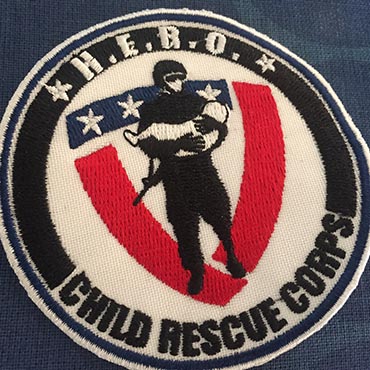Wounded warriors take aim at online predators

Through computer forensics training and internships, veterans are helping Immigration and Customs Enforcement tackle a backlog in child exploitation cases.

Service-disabled veterans are finding a new mission in the Human Exploitation Rescue Operative Corps.
For the third year running, classes of wounded veterans have gathered for a new mission: to take on a vile and rampant adversary in the online child predator. The former soldiers have been primed to help the Department of Homeland Security's Immigration and Customs Enforcement division process an immense backlog in child exploitation cases.
Virtual warehouses worth of case data sit unexamined on servers around the country. The backlog has weighed heavily on Brian Widener, who leads a computer forensics division within ICE.
"How many victims are sitting there on a computer for X number of months because we didn't get a chance to get to it?" he said. ICE's computer forensics teams processed 3.9 petabytes worth of data on child exploitation cases in 2013, and 5.2 petabytes worth of data in 2014, according to Widener.
This dire staffing need bred the Human Exploitation Rescue Operative (HERO) Corps, a yearlong program to train veterans to use computer forensics to combat the sexual exploitation of children. The program has expanded beyond the veterans of Special Operations Command who initially participated, to include veterans of the National Guard and Reserve. ICE said it has hired several program graduates as computer forensic analysts in its Homeland Security Investigations division.
The application process is competitive. From a pool of 94 applicants, 24 veterans were chosen for the latest class. The curriculum is both technical and emotional, but applicants do not necessarily need computer skills to apply – computers are just one "component of the battle on child exploitation," said Joseph Arata, ICE's chief of strategic recruitment.
The course begins with three weeks focusing on the gravity of the mission. The veterans are trained to cope with a new sort of trauma, that of processing the graphic and disturbing imagery of child exploitation.
Many of the veterans "are driven more than anything else in life by wanting a new mission," said Grier Weeks, executive director of the National Association to Protect Children, the program's nonprofit partner that conducts the immersion training. "And it's been amazing to see how they grab ahold of this mission."
After getting to know the depraved underworld of child predation, the veterans do eight weeks of computer forensics training at ICE's Cyber Crimes Center in Fairfax, Va. They start with the basics -- things like creating hash values to catalog digital images. Within two to three weeks, the veterans have typically earned a CompTIA A+ IT security certification, according to Widener. Software vendors then teach the veterans how to use platforms such as EnCase to log forensics. And the end game is never far from mind: Last year, trainees took part in a moot court in which lawyers grilled them on the data they unearthed.
The third part of the program is a 10-month internship at ICE field offices around the country. The veterans work side-by-side with investigators, often processing evidence where a warrant has been served. "They're an integral piece right from the get-go," Widener said.
Serving the children
Two of the veterans in the program said their young children inspired them to participate in the program. Mark and Joe asked that their last names be withheld for privacy reasons.
The more Mark heard about the program from a friend, the more it "re-sparked that interest and that motivation to continue to serve my country … not only for the country, but for the kids themselves, the victims," he said.
"It's a good mission," Joe said of the forensics training. "Sometimes we don't get to pick and choose our missions in the military. … But here, now that we're out … we have this opportunity to pick and do something we want to do, so this is important to us."
Joe, a multiple amputee, said he originally wanted to be an investigator in child exploitation cases, but realized that "for every one investigator, there [are] 35 dudes punching on computers, pulling up information that they use to build the case file," he said. "For me, I knew that switch had to be made to the technology side."
NEXT STORY: NIST seeks CDM trial


